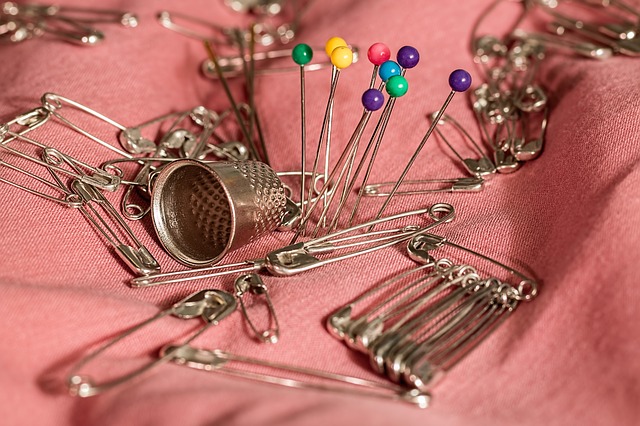If you’re just starting out with sewing, then it might seem a bit intimidating. A lot can go wrong, from unseemly seams to mismatched pieces. If you don’t know what to do, then chances are you’ll make a few mistakes. Thankfully there are a few tips and tricks to help even the most novice beginners sew better.
1 – Get the Right Equipment.
Believe it or not, not all needles and scissors are made equal. Look for dressmaking scissors or a mat with a rotary cutter. Also select the correct needle for the materials you’ll be using (such as thicker, longer needles for upholstery work, thicker needles for denim, so on).
2 – Always Double (and Triple!) Check.
There’s a saying you’ve probably heard before ‘cut once; measure twice’. Always measure and measure and measure to ensure that you’ve got everything done right before you cut. You can always alter a garment before you cut, but once you start cutting, it becomes a lot harder. Double check your measurements, placements, and pieces (ensuring that you have 1 right and 1 left arm cut out rather than 2 right or left arms) are correct.
3 – Wash and Dry Your Fabric Before You Sew.
Wash and dry your fabric after you buy it, and before you sew it. This helps to reduce the amount of shrinkage you can expect after your finished product. This ensures that it fits you better and as it should. If you’re working with a fabric that can’t typically be washed and dried at home (like wool), take it to a dry cleaner to be pre-shrunk.
4 – Iron Pattern Pieces – and the Fabric, Too!
Iron your pattern pieces with a dry iron to ensure that you get a more accurate shape. Patterns are very easily crumpled and should be treated with care. For even more accurate results, you should also iron the fabric you intend to use (if it can be ironed).
5 – Pin the Pieces Together.
It’s much easier, whether you’re sewing by hand or with the best sewing machine for beginners, to sew close to the seam when you pin the pieces together. Always make sure, though, that you’re sewing the garment or item ‘inside out’. You will flip it right side out when you’re finished.
6 – Use the Whole Length of the Scissors.
To ensure cleaner, straighter cuts, use the entire length of your scissors when cutting. Stop right before the tip of the scissors, then start again. This will help your cuts look crisper and be easier to sew.
7 – Use a Flat Surface.
When you’re doing your cutting and other prep work, using a large, flat surface is incredibly important. Most people find that the dining room table is amply flat and large. Find a space that isn’t cluttered and has room for you to spread out all of your equipment.
Sewing is an amazing hobby and you can expect to at the very least save money with it (if not earn a little!) Don’t be afraid to experiment and have fun, but follow these basic tips and tricks for a better overall experience!





